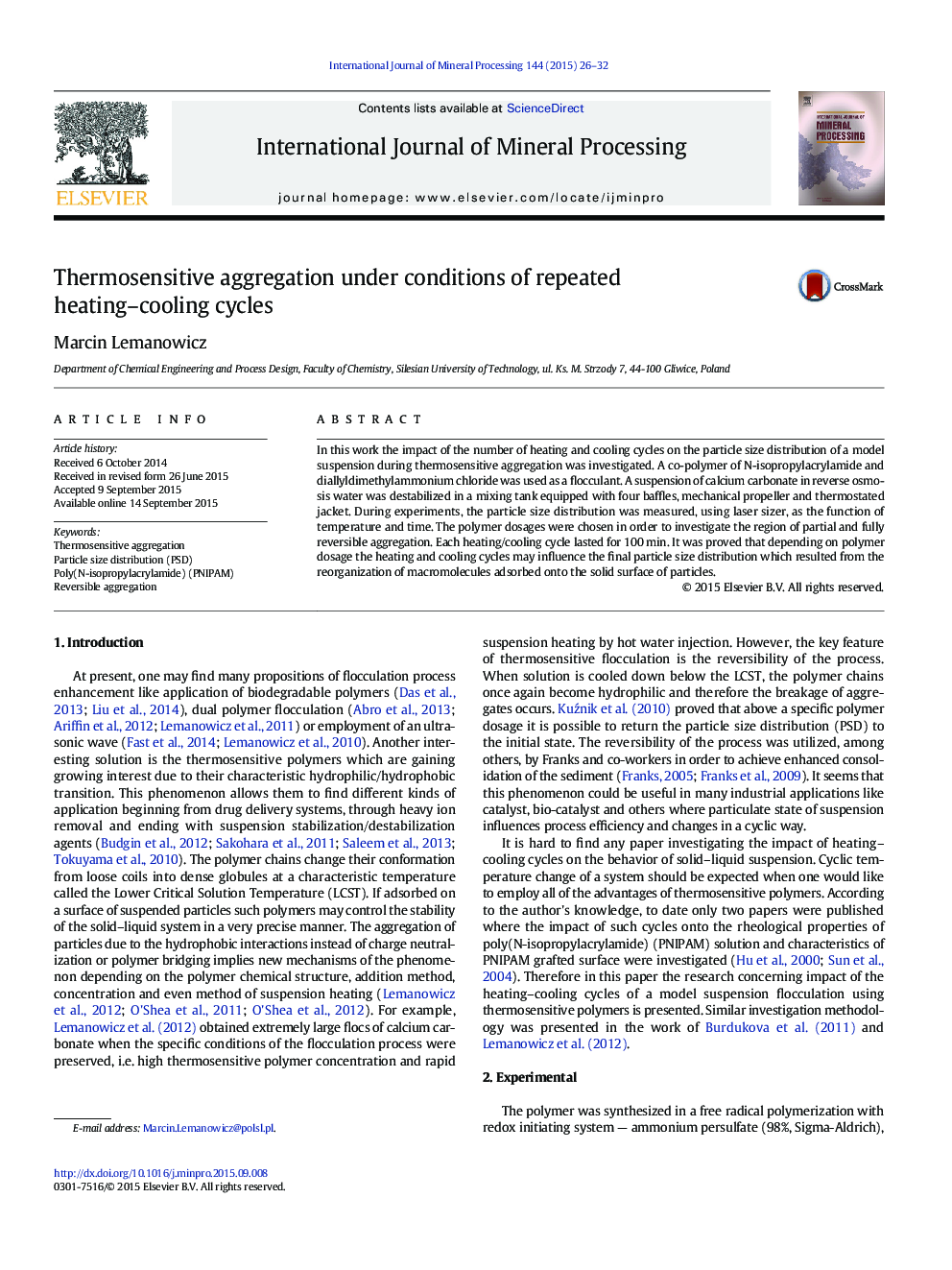| Article ID | Journal | Published Year | Pages | File Type |
|---|---|---|---|---|
| 213830 | International Journal of Mineral Processing | 2015 | 7 Pages |
•Thermosensitive aggregation of model suspension was investigated.•Four heating–cooling cycles were employed (from 298 K to 313 K).•Polymer dosage influences aggregation in each cycle.•The number of cycles influences the particle size distribution.
In this work the impact of the number of heating and cooling cycles on the particle size distribution of a model suspension during thermosensitive aggregation was investigated. A co-polymer of N-isopropylacrylamide and diallyldimethylammonium chloride was used as a flocculant. A suspension of calcium carbonate in reverse osmosis water was destabilized in a mixing tank equipped with four baffles, mechanical propeller and thermostated jacket. During experiments, the particle size distribution was measured, using laser sizer, as the function of temperature and time. The polymer dosages were chosen in order to investigate the region of partial and fully reversible aggregation. Each heating/cooling cycle lasted for 100 min. It was proved that depending on polymer dosage the heating and cooling cycles may influence the final particle size distribution which resulted from the reorganization of macromolecules adsorbed onto the solid surface of particles.
Graphical abstractFigure optionsDownload full-size imageDownload as PowerPoint slide
